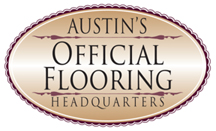
Green. Hard. Hot.
Bamboo isnʼt the hardest wood on the market, but itʼs strikingly beautiful and easy to grow. A new, shiny bamboo floor has a unique look and feel you wonʼt find with other types of hardwood. Thatʼs why itʼs among the most popular hardwoods being used nowadays in new homes and home remodeling projects.
Is Bamboo Right For Me?
Bamboo offers the following advantages:
- Environmentally responsible
- Beautiful flooring
Bamboo floors are highly desirable for their looks and environmental benefits. An oak tree takes roughly 120 years to grow to maturity, but a bamboo stalk can be harvested in as few as three years. However, thatʼs also part of the problem. To satisfy global demand for bamboo, the stalks are often harvested when they reach a certain size, but before they reach peak maturity. A premature bamboo stalk wonʼt be as hard as it should have been. Even at full maturity, bamboo is still softer than several other types of hardwood flooring.
Carbonized bamboo, one of the most popular types, is comparable in hardness to black walnut – which is considered to be a soft hardwood floor. When shopping for bamboo flooring, you must be careful not to purchase from a supply that has been prematurely cut.
Which Bamboo Is Right For Me?
Where do you want to install bamboo flooring? Are you thinking of putting it in your living room, or perhaps installing it in a back bedroom? The size of the floor youʼre considering could easily effect which type of bamboo flooring you choose. The two most common types of bamboo floors in the United States are referred to as vertical grade and horizontal grade. To make them, the bamboo shuts are cut, dried and glued together in panels. Before being glued, the strips are boiled to kill off any fungus or bacteria from the bamboo forest.
Both of these grades of bamboo flooring are highly processed. Bamboo flooring vertical grade: With vertical grade bamboo flooring, the grain of the wood is visible in several, close-together lines. The narrow look of the vertical grade flooring makes it ideal for installation in small rooms. Bamboo flooring horizontal grain: This type of flooring is better for installation in larger rooms. Unlike the vertical grade bamboo flooring, the horizontal grade flooring has much wider grain lines, giving the flooring a larger look and feel. Bamboo floor coloring The two colors most commonly used in bamboo flooring are natural and carbonized. Natural resembles beech, and carbonized resembles oak. However, itʼs easy to find a company to customize the colors for your bamboo flooring.
Examples of custom bamboo floor colors are golden oak, granite, wenge, terracotta, gold, pink sand, taupe and caramel. Installation Installing bamboo flooring is usually no different than installing any other kind of hardwood floor. You can either glue it down, nail it down or assemble the wood planks to allow them to “float” on the subflooring. Rather than use nails, some experts prefer using staples to fasten the flooring to the subfloor, because staples provide a better seal and reduce floor noise. Or, you can purchase whatʼs known as “locking” bamboo flooring. This type of bamboo flooring comes fitted with interlocking joints that virtually snap in place, plank by plank, allowing for extremely easy assembly.























